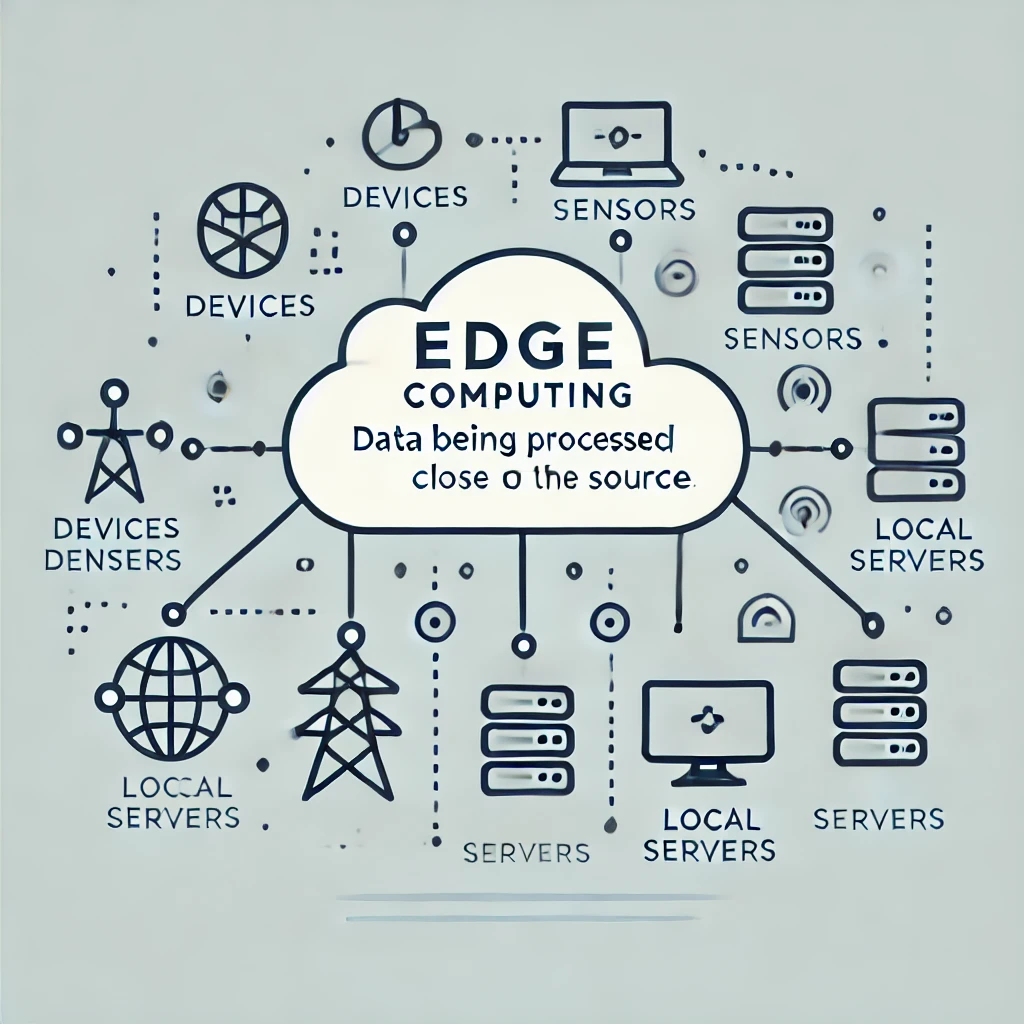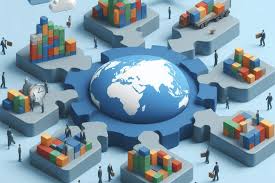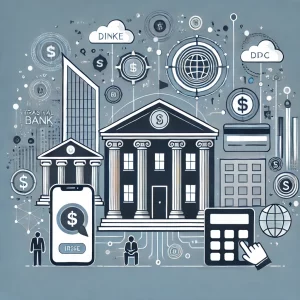The Rise of Edge Computing and Its Benefits

Edge computing is rapidly emerging as a transformative technology in the digital world, offering a new approach to data processing and management. By decentralizing data computation and moving it closer to the source of data generation, edge computing helps address the limitations of traditional cloud computing. This shift aims to optimize the speed, security, and efficiency of data processing, which is becoming increasingly important in today’s connected world, driven by the growth of IoT, 5G, and real-time applications.
In this article, we’ll explore the concept of edge computing, its benefits, and how it’s reshaping various industries.
What is Edge Computing?
Edge computing is a distributed computing framework that brings data processing closer to the devices generating the data, rather than relying on centralized cloud data centers. This approach aims to reduce latency, minimize bandwidth usage, and enable real-time data analysis by processing information at the “edge” of the network—near where the data is being produced, such as IoT devices, sensors, or local servers.
For example, in a traditional cloud computing model, data generated by IoT devices might be sent to a distant cloud server for processing. With edge computing, that same data is processed locally, on the device itself or on a nearby edge server, resulting in faster response times and reduced data transfer costs.
The Benefits of Edge Computing
1. Reduced Latency
One of the most significant benefits of edge computing is its ability to minimize latency. Since data processing occurs closer to the source, edge computing significantly reduces the time it takes for data to travel to a central server and back. This is especially important for applications that require real-time responses, such as autonomous vehicles, industrial automation, augmented reality (AR), and virtual reality (VR).
For instance, in autonomous driving, vehicles need to make split-second decisions based on sensor data. Edge computing allows for the immediate processing of this data, ensuring a timely response that could be crucial for safety.
2. Bandwidth Optimization
As the number of connected devices continues to grow, the volume of data generated is increasing exponentially. Transmitting all this data to a central cloud server for processing can strain network bandwidth, leading to higher costs and slower performance. Edge computing addresses this issue by processing data locally, reducing the need to send large amounts of data over the network.
By filtering and analyzing data at the edge, only essential or summary information is sent to the cloud, optimizing bandwidth usage and lowering data transfer costs. This is particularly beneficial in environments with limited network connectivity or expensive bandwidth, such as remote industrial sites or offshore oil rigs.
3. Enhanced Security and Privacy
Edge computing can improve data security and privacy by keeping sensitive information closer to its source. When data is processed locally, there is less need to transfer it across the network to a central server, reducing the risk of data breaches during transmission. In some cases, data can be anonymized, encrypted, or aggregated at the edge before being sent to the cloud, further enhancing privacy protections.
Industries like healthcare, finance, and government, which handle sensitive data, can benefit from edge computing by complying with data protection regulations more effectively while still leveraging real-time insights.
4. Increased Reliability
By decentralizing data processing, edge computing enhances the reliability and availability of applications. When data is processed locally, systems can continue to operate independently, even if there are disruptions in the network or connectivity issues with the central cloud. This ensures continuous operation for critical systems, such as industrial machinery, smart grids, or remote monitoring applications.
For example, in a factory setting, edge computing allows machinery to function with minimal downtime, as critical data can be processed on-site without relying on a cloud connection.
5. Supports Emerging Technologies
Edge computing plays a crucial role in enabling emerging technologies such as the Internet of Things (IoT), 5G networks, and AI-powered applications. As IoT devices generate massive amounts of data, processing it at the edge helps manage the data volume efficiently, allowing for quicker insights and more responsive systems.
With the advent of 5G, edge computing becomes even more relevant, as it allows for ultra-low latency data processing that meets the demands of next-generation applications, including smart cities, connected healthcare, and autonomous transportation.
Use Cases of Edge Computing Across Industries
1. Industrial Automation
In manufacturing, edge computing is used for predictive maintenance and real-time monitoring of equipment. By analyzing data from sensors installed on machinery, manufacturers can detect anomalies or potential failures before they occur, reducing downtime and maintenance costs. Edge computing enables rapid response times, ensuring that any issues are addressed promptly.
2. Healthcare
Edge computing facilitates real-time monitoring of patients through wearable devices that collect health data, such as heart rate, blood pressure, and glucose levels. This data can be processed locally to detect any abnormalities and alert healthcare professionals instantly. It also enables remote diagnostics and telemedicine, where patient data is analyzed at the edge to provide quicker responses in critical situations.
3. Smart Cities
Smart city initiatives utilize edge computing to manage data generated by traffic sensors, surveillance cameras, and environmental monitors. By processing data at the edge, cities can optimize traffic flow, reduce energy consumption, and improve public safety in real time. For example, smart traffic lights that adjust their timing based on current traffic conditions use edge computing to enhance urban mobility.
4. Retail
In retail, edge computing is used for customer behavior analysis, inventory management, and checkout-free shopping experiences. AI-powered cameras and sensors can process data locally to detect when items are taken from shelves, automatically updating inventory and charging customers, as seen in stores like Amazon Go.
5. Telecommunications
Telecommunications companies use edge computing to optimize the delivery of content, such as streaming video or gaming services. By caching content closer to users, edge computing reduces latency and improves the quality of service. It is also essential for the deployment of 5G networks, where real-time data processing is required for connected devices.
Challenges of Edge Computing
Despite its benefits, edge computing faces several challenges that must be addressed:
- Infrastructure Costs: Setting up edge computing infrastructure requires investment in edge servers, storage, and networking equipment. These costs may be prohibitive for smaller companies or organizations with limited resources.
- Data Management: Managing data across multiple edge locations can be complex, especially when dealing with large datasets or diverse data formats. Ensuring data consistency and integration with central systems requires robust data management strategies.
- Security Concerns: While edge computing can enhance data privacy, it also introduces new security challenges. Edge devices may be more vulnerable to physical attacks or malware, and ensuring the security of these distributed systems is critical.
- Scalability: As the number of connected devices grows, scaling edge computing solutions to meet increasing demands can be difficult. Proper planning and architecture are needed to support a growing network of edge devices.
The Future of Edge Computing
The future of edge computing looks promising, with continued advancements in IoT, 5G, and AI driving its adoption. As more industries recognize the value of processing data closer to its source, edge computing will become an integral part of the IT landscape. The convergence of edge computing with AI and machine learning will enable intelligent systems that can make decisions autonomously, leading to more innovative applications and services.
In the coming years, we can expect to see more edge data centers, specialized edge devices, and hybrid models combining cloud and edge computing to deliver the best of both worlds. The role of edge computing in supporting real-time applications and emerging technologies will continue to expand, reshaping how businesses operate and interact with the digital world.
Conclusion
Edge computing is a powerful technology that addresses the limitations of traditional cloud computing by bringing data processing closer to the source. It offers significant benefits such as reduced latency, bandwidth optimization, enhanced security, and increased reliability, making it ideal for various industries, including manufacturing, healthcare, retail, and smart cities.
As technology continues to evolve, edge computing will play a crucial role in enabling the next generation of applications and services, providing businesses with the tools they need to stay competitive in an increasingly connected world.





